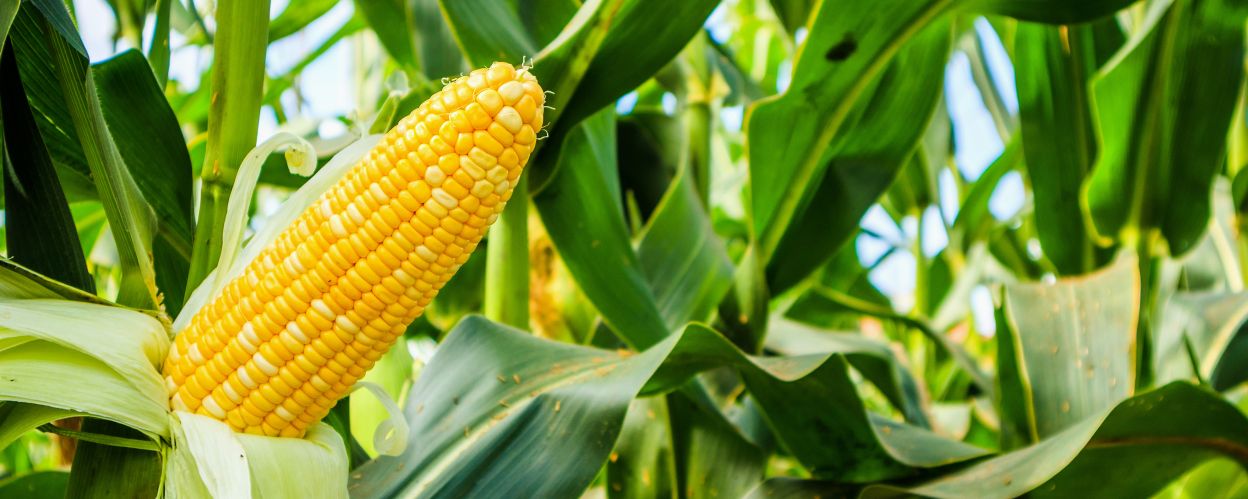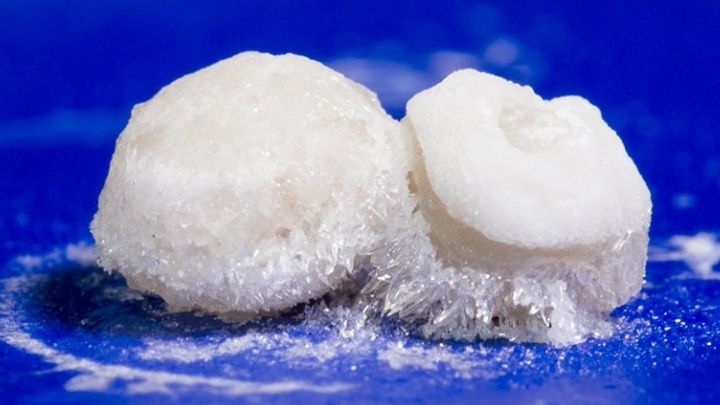
The right mixture works
An established means of making better use of nutrients is under-foot fertilization for some crops. In the case of corn in particular, it is impossible to imagine the placed application of nitrogen and phosphorus as fertilizers without it. But even in this case, there are still some adjustments that can improve efficiency even further. One of these is the combined application of our ESTA Kieserit gran. with diammon phosphate (DAP) in a 1:1 ratio as a under-foot fertilization. In this video, we will provide you with further information on the relevant advantages.
The struvite effect
Struvite is an ammonium magnesium phosphate. Formation occurs at a 1:1 mixing ratio of ESTA Kieserit GRAN. (25 % MgO; / 50 % SO3 (20 % S)) and diammon phosphate (18 % N; 46 %P2O5) under the influence of moisture. This is shown by a scientific study produced by the Institute of Plant Nutrition and Soil Science at the Christian-Albrechts-University in Kiel. However, direct contact of the two fertilizers in the soil fertilizer belt is not absolutely necessary. Struvite also occurs when 1% solutions of the two fertilizers come together.
The advantages of struvite

Struvite binds the nitrogen from the DAP as ammonium and therefore protects it from too rapid nitrification and leaching losses. Furthermore, the phosphate from the DAP in the new struvite compound no longer has any affinity to calcium. This means that it is not subject to ageing processes, especially in soil with a high pH value. The same applies to freshly whitewashed floors.
The nutrients present in the struvite compound (nitrogen, phosphorus, and magnesium) remain completely available to the plant. During early development in particular, the nutrients are available over a longer period of time.
Ensuring the magnesium supply of corn
In addition to nitrogen and phosphorus efficiency, improving aspects of struvite formation, this under-foot fertilization strategy also plays a significant role in the targeted and needs-based provision of magnesium as a nutrient to corn. At a yield level of 550 dt fresh matter (FM) per ha, corn has a magnesium requirement of 50 kg MgO/ha. This increases further as the yield level rises, so that a high-yielding corn as an energy source with 800 dt FM/ha, for example, already requires more than 70 kg MgO/ha.
The plant takes up magnesium with the mass flow. In terms of function, the uptake is strongly dependent on the availability of soil water. In dry conditions, magnesium can quickly be reduced to a minimum for the corn plant, which requires a high magnesium content. Low soil magnesium contents enhance this effect. The worst combination imaginable is too low a soil content with dryness at the time of highest demand. Here ESTA Kieserit as an additive for under-foot fertilization has a very significant advantage.
The magnesium in ESTA Kieserit is sulfatic, which has a water solubility that is 300 times higher than the magnesium forms mainly found in soil (Mg-oxides and -hydroxides) or those from lime fertilizers (Mg-carbonates). For this reason, ESTA Kieserit can be used for under-foot fertilization to cover a considerable proportion of the magnesium requirement during the important phase of early development, even during droughts, must be ensured.
Close nutrient gaps and avoid nutrient antagonisms
As corn is usually supplied with higher amounts of farm manure - especially biogas fermentation residues and cattle slurry - in addition to under-foot fertilization, problems of magnesium deficiency often arise due to nutrient antagonisms that inhibit uptake. Ammonium-magnesium but also potassium-magnesium antagonisms play an important role.
Nutrients in fermentation residues
| Nutrient content (kg/t fresh substance) | Nutrient availability (CaCl2) | Rating |
|
Nitrogen (N): 4–5 of which ammonium (NH4–N):2-3 |
40–60% 70–90% |
average high |
| Phosphorous (P2O5): 1,5–2,0 | 60–70% | average high |
| Potassium (K2O): 4,5–5,5 | 90–100% | very high |
| Magnesium (MgO): 0,6–1,0 | 15–20% | low |
| Sulfur (S): 0,3–0,4 | – | very low |
| Nutrient balance required for magnesium and sulfur | ||
Fertilization recommendation confirmed by field trials
Compared to ammonium and potassium, magnesium content in fermentation residues is significantly lower and additionally less available. This imbalance applies to organic fertilizers as a whole and can lead to blockages in magnesium uptake. Here, too, these effects can be exacerbated by drought and excessively low soil magnesium contents.
For these reasons, attention should be paid to nutrient balancing with magnesium, as well as sulfur, when using organic fertilizers. Combining DAP with ESTA Kieserit in under-foot fertilization closes these gaps and ensures balanced plant nutrition, in line with Liebig's law.
Good experience with DAP and ESTA Kieserit has also been demonstrated in field trials. With the combination of 1 dt/ha DAP with 1 dt/ha ESTA Kieserit shown in trials, the corn plant can cover most of its sulfur and magnesium needs already in the important phase of young plant development. Especially when higher amounts of organic fertilizers are applied, the negative antagonism between potassium and magnesium during plant uptake can be avoided. This results in additional yield benefits.
A combined under-foot fertilization ensures nutrient supply
Yield and quality can be demonstrably increased by a 1:1 combination of DAP and ESTA Kieserite for under-foot fertilization. In cases in which magnesium can easily become deficient in particular, the clear yield advantages to be gained from DAP and ESTA Kieserit under-foot fertilization are apparent. The struvite effect and the balanced nutrition of corn by closing nutrient gaps for magnesium and sulfur help to use nitrogen ans phosphorus more efficiently.





